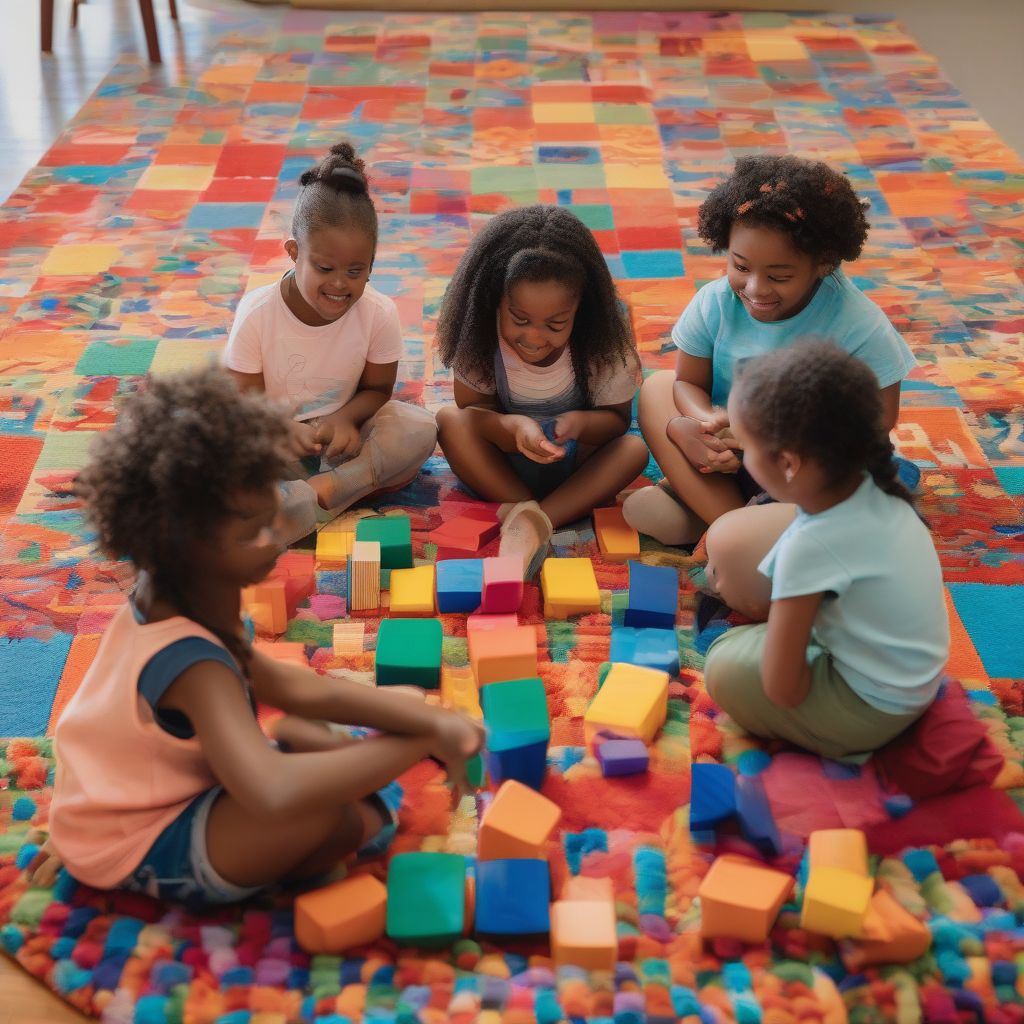Remember the excitement of building a tower with colorful blocks as a child? Or the satisfaction of fitting the right shapes into their corresponding holes? These experiences, far from being just playful moments, were actually our early encounters with manipulatives and visual aids – powerful tools that significantly enhance the learning process.
But their effectiveness isn’t limited to childhood learning. Manipulatives and visual aids, when implemented strategically, can transform the way individuals of all ages grasp and retain information. This guide delves into the ‘how’ and ‘why’ of incorporating these tools, equipping educators, parents, and even learners themselves with the knowledge to unlock their full potential.
Understanding the Power of Hands-On Learning
Why are manipulatives and visual aids such game-changers in learning? They bridge the gap between abstract concepts and concrete understanding, making learning:
1. Engaging and Interactive: Forget passive listening! Manipulatives turn learning into an active exploration, encouraging hands-on experimentation and discovery. Visual aids, on the other hand, capture attention and make information more accessible, especially for visual learners.
2. Concrete and Tangible: Abstract ideas can feel slippery and difficult to grasp. Manipulatives provide a physical representation of these ideas, making them tangible and easier to comprehend. Visual aids, similarly, offer a visual anchor for these abstract concepts, grounding them in a way that words alone cannot.
3. Relevant and Meaningful: By connecting learning to real-world objects and experiences, manipulatives and visual aids enhance relevance and meaning-making. This connection fosters deeper understanding and promotes knowledge retention.
 Children Using Colorful Blocks for Hands-On Learning
Children Using Colorful Blocks for Hands-On Learning
Unlocking the Potential: Effective Use of Manipulatives
From simple counters to intricate models, manipulatives come in all shapes and sizes. Here’s how to effectively incorporate them into various learning environments:
1. Mathematics: Building a Strong Foundation
Imagine trying to teach a child about fractions using only words. Now, imagine the difference if you slice a pizza into equal parts or use fraction circles to visually represent the concept. Manipulatives like:
- Counting bears: Introduce basic counting, sorting, and patterning.
- Base ten blocks: Teach place value, addition, subtraction, and even multiplication and division.
- Geometric solids: Help students visualize and understand three-dimensional shapes and their properties.
- Fraction circles or bars: Provide a concrete representation of fractions, making operations like addition and subtraction easier to grasp.
2. Language Arts: Bringing Words to Life
Manipulatives aren’t just for STEM subjects. They can breathe life into language learning too:
- Letter tiles: Help young learners recognize letters, practice spelling, and build vocabulary.
- Storytelling props: Encourage creative writing and storytelling by providing visual cues and sparking imagination.
- Sentence strips: Allow students to physically manipulate words to create and rearrange sentences, enhancing grammatical understanding.
3. Science: From Observation to Experimentation
Science comes alive when students can interact with the concepts they are learning. Consider these examples:
- Magnets: Allow students to explore magnetic fields, poles, and attraction/repulsion.
- Scales and weights: Teach about measurement, gravity, and balance.
- Plants and seeds: Provide a hands-on experience for learning about plant life cycles, growth, and the needs of living things.
4. Social Studies: Making History Tangible
- Maps and globes: Help students visualize geographical locations, understand spatial relationships, and explore different cultures.
- Timelines: Provide a visual representation of historical events, fostering chronological understanding and cause-and-effect relationships.
- Artifacts (replicas or real): Bring history to life, allowing students to connect with the past through tangible objects.
 Students Gather Around a Globe for an Interactive Lesson
Students Gather Around a Globe for an Interactive Lesson
The Visual Advantage: Engaging Learners Through Sight
Visual aids, from simple charts to interactive presentations, cater to different learning styles and make information more accessible and engaging:
1. Types of Visual Aids and Their Applications
- Charts and Graphs: Present data, trends, and relationships in a clear and concise way.
- Diagrams and Illustrations: Simplify complex concepts and processes, making them easier to understand.
- Maps and Timelines: As mentioned before, these tools are invaluable for teaching geography and history, providing visual context and aiding in comprehension.
- Videos and Animations: Bring learning to life, making abstract concepts more concrete and engaging, especially for visual learners.
- Interactive Whiteboards and Software: Transform classrooms into dynamic learning environments, allowing for real-time collaboration, manipulation of objects, and immediate feedback.
2. Tips for Effective Use of Visual Aids:
- Keep it Simple: Avoid clutter and overwhelming information.
- Use High-Quality Images: Ensure images are clear, relevant, and visually appealing.
- Incorporate Color and Contrast: Enhance visibility and highlight key information.
- Engage Multiple Senses: Combine visual aids with auditory or kinesthetic elements for a richer learning experience.
- Encourage Interaction: Ask questions, prompt discussions, and encourage students to interact with the visual aids.
Bridging the Gap: Integrating Manipulatives and Visual Aids
While powerful individually, the true magic happens when manipulatives and visual aids are used together. Here’s how to create a synergistic learning experience:
- Introduce a concept with a visual aid: For example, start a lesson on fractions with a visual representation of a pie chart divided into sections.
- Transition to manipulatives for hands-on exploration: Provide students with fraction circles or bars to physically divide and manipulate, reinforcing the concept.
- Use visual aids to summarize and reinforce: After hands-on activities, revisit the pie chart or introduce a new visual aid, like a bar graph representing fractions, to solidify understanding.
Conclusion: Empowering Lifelong Learners
The beauty of manipulatives and visual aids lies in their versatility and adaptability. By incorporating these tools into learning environments, we empower individuals of all ages and learning styles to become active participants in their own learning journeys.
As you embark on your own exploration of these powerful tools, remember that the key is to be creative, experiment, and most importantly, have fun! The possibilities for engaging learners and making learning memorable are limitless.
Now it’s your turn! What are some of your favorite ways to use manipulatives and visual aids in learning? Share your experiences and ideas in the comments below. Let’s inspire each other to create engaging and effective learning environments for everyone.
[amazon bestseller=”learning manipulatives”]
